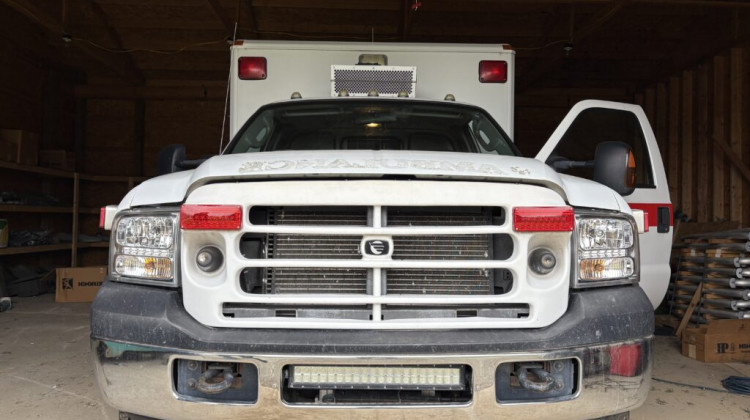
Southern Henry Ambulance Service’s vehicle and barn in Knightstown.
Grayson Joslin for the Indiana Capital ChronicleBy Grayson Joslin
Time is tissue in the first responder community, and in rural areas across Indiana, they could be losing too much tissue for EMS responses.
Knightstown knows this situation all too well. The town, situated in the southern portion of Henry County, is 25 minutes away from the county seat, New Castle, which has their own EMS services and hospital.
But sometimes the New Castle EMS may have other calls to answer, so it could be anywhere from 45 minutes to an hour for EMS to get to Knightstown. Volunteer Kevin Richey understands this; he has volunteered for many years as an EMT.
“We’re in a precarious situation down here, with how far we are from New Castle,” Richey said. “Lives can be saved or lost in that amount of time.”
In Indiana, rural EMS have been facing myriad issues, such as losing services, decreasing levels of volunteers and rising costs.
As rural communities are taking the brunt of the hit caused by the EMS and paramedic shortage in the state, communities, nonprofits and government officials are taking action to provide more coverage for rural areas.
Help from the community and the Statehouse
Since January 2023, Knightstown has not had immediate emergency medical service coverage.
Southwest District Ambulance Service had served the Knightstown area and southern Henry County since the mid-1990s, but it shuttered at the end of 2022 due to issues with funding and a lack of EMTs willing to volunteer. In the last four years of its existence, Southwest had lost $96,000.
In Indiana, a third of EMS departments across the state are volunteer; 20% are paid EMS operators, while 18% are a mix of paid and volunteer, according to data from the Indiana Department of Homeland Security published in 2024.
After Southwest ceased operations, Richey asked around the Knightstown community to see if there would be support to create a new nonprofit from scratch for providing EMS resources.
Southern Henry Ambulance Service was approved as a 501(c)3 nonprofit in early 2023, and started a fundraising effort across Knightstown and on GoFundMe to get the service off of the ground. The fundraising helped bring attention to the nonprofit, and it helped bring some funds to them. They purchased an ambulance from Letts Community Volunteer Fire and Rescue, and other volunteer services have chipped in to help the start-up. In December 2024, the Knightstown Town Council approved to lease out a barn in the town for Southern Henry Ambulance Service to use as their base of operations.
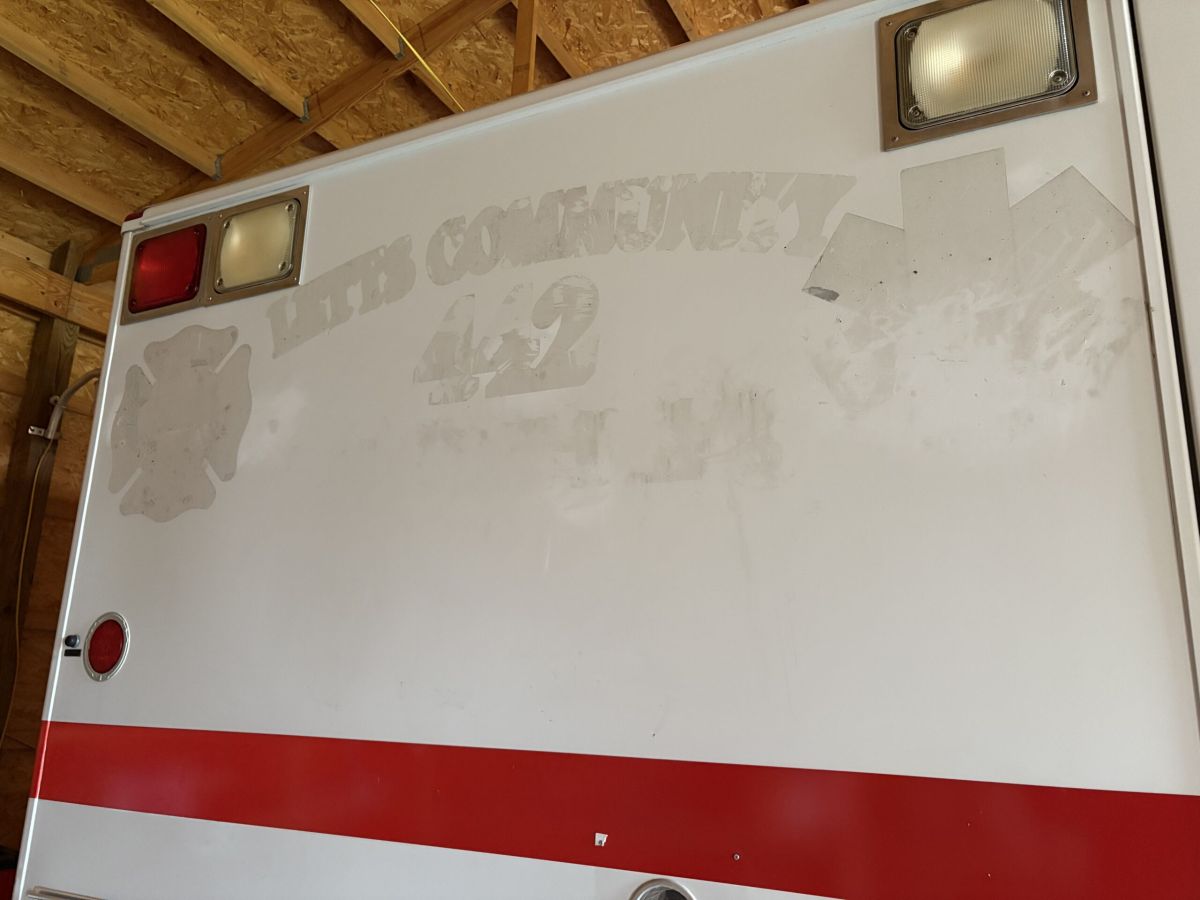
Besides government-supported types of EMS, other service providers have chipped in to fill the need with EMS support across the state. IDHS data shows that 9% of EMS providers are hospital-based and 6.2% are private.
Currently, Richey is in the process of writing grants to various organizations to help get some money that will allow them to start making runs. He said that once more funding comes through, there are service companies willing to offer their services at a discount.
Help has been coming from the state government in recent years to alleviate the financial stress of public safety. Kraig Kinney, state EMS director, said that his division got legislative funding for the first time in 2023, to the tune of $6.4 million a year. With that money the EMS division began offering grants for EMS services for equipment, training support and mobile integrated healthcare.
“Our idea was that it would help particularly the rural areas of the state, and help them get modern, innovative equipment,” Kinney said.
Because of the success of the grant programs these past few years, the EMS division of IDHS will continue to offer grants in the future. Kinney believes that there are misunderstandings with EMS funding. He says that people believe that billing covers the cost for operating that ambulance, however that is not the case, because there are many other expenses factored in as well, and that can cause competition for funding at the municipal level.
“EMS has an income source, but it is not a sufficient income source,” Kinney said.
In rural communities across Indiana, Richey believes that it is important that local communities chip in and help their areas have an adequate emergency response.
“You should have the same support, no matter if you are in New York City or Knightstown,” Richey said. “These areas get overlooked because we don’t have the voice that a larger community does. We need people to shout and get people’s attention that we need these services.”
Keeping afloat with taxes
Almost half of Fayette County’s residents live in rural areas. Exacerbating issues is the fact the county lost its only hospital, Fayette Regional Health in Connersville, in 2019. Eighteen of Indiana’s 92 counties do not have a hospital in their county, according to Indiana Department of Health data. This has put an additional strain on its existing EMS operations. Runs that used to take two to three minutes to make now take about 30 to 35 minutes.
“We have no surgery services here in the county,” Fayette County EMS chief Clint Hardin said. “We spend a lot more time taking patients to other facilities, either in Rushville or in Richmond.”
To combat the additional time needed to make runs, Hardin needed to have more staff available on call, and sometimes calls that the county EMS were taking would put them at a loss. Hardin says this is because Fayette County is an economically depressed county, and one where a sizable chunk of its residents are on either Medicare or Medicaid.
Fayette County EMS is funded half by Fayette County and half by the city of Connersville; in 2024, both the Connersville City Council and the Fayette County Council approved a 0.25% public safety tax on income to go toward providing more funds to the county’s various public safety services. Hardin said the funding from the tax allowed him to give his employees a $5,000 raise.
“There was about a decade or a decade and a half where no one got raises in this town,” Hardin said. “It was making us not an attractive place to work.”
Government funding makes up for the majority of EMS funding in the state. IDHS data found two-thirds of all EMS funding came from government funding, 24% came from health care funding and 8% came from other various funding sources. Over the past few years across the state, counties have begun to increase their public safety taxes; for example, last year in Henry County the local public safety tax increased from .25% to .42%.
With the potential implications of Senate Bill 1 — a measure to reduce property taxes — public safety services in rural counties are vulnerable. Hardin said that now more than ever, emergency departments are becoming the safety net of a community, especially in a county that does not have a hospital.
“What people kinda lose sight of is property taxes is the only tax that we pay that is 99% local,” he said. “That funds police, fire, EMS, your streets, your parks, your libraries, your schools. You get to see the benefit of your tax dollars.”
 DONATE
DONATE




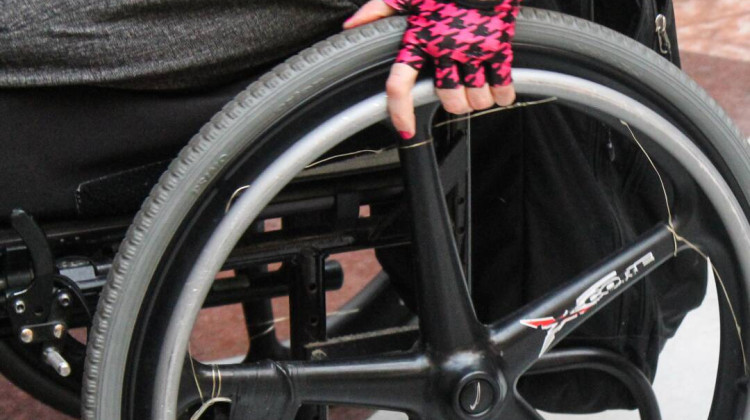
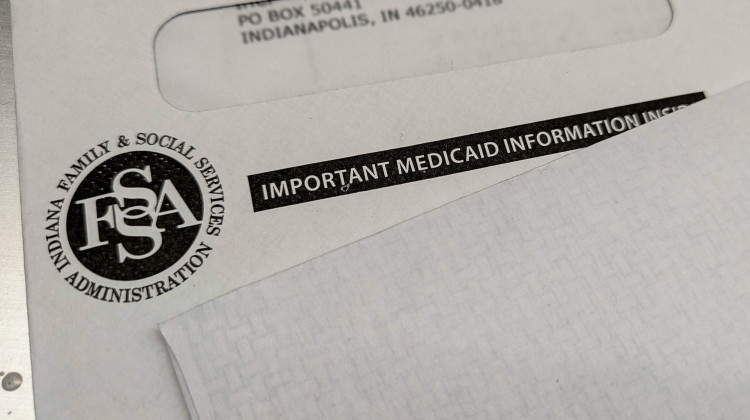
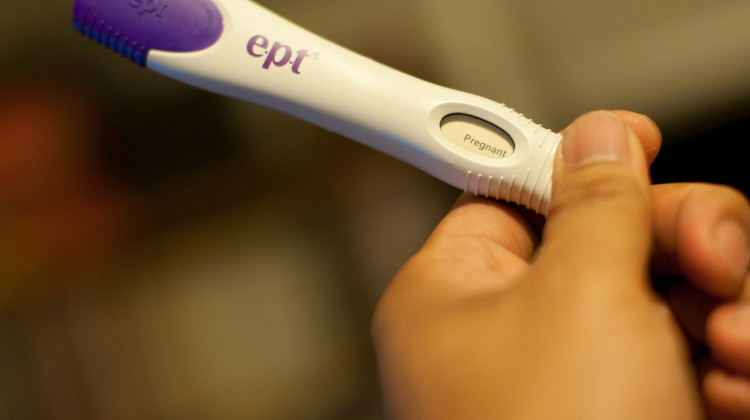

 Support WFYI. We can't do it without you.
Support WFYI. We can't do it without you.